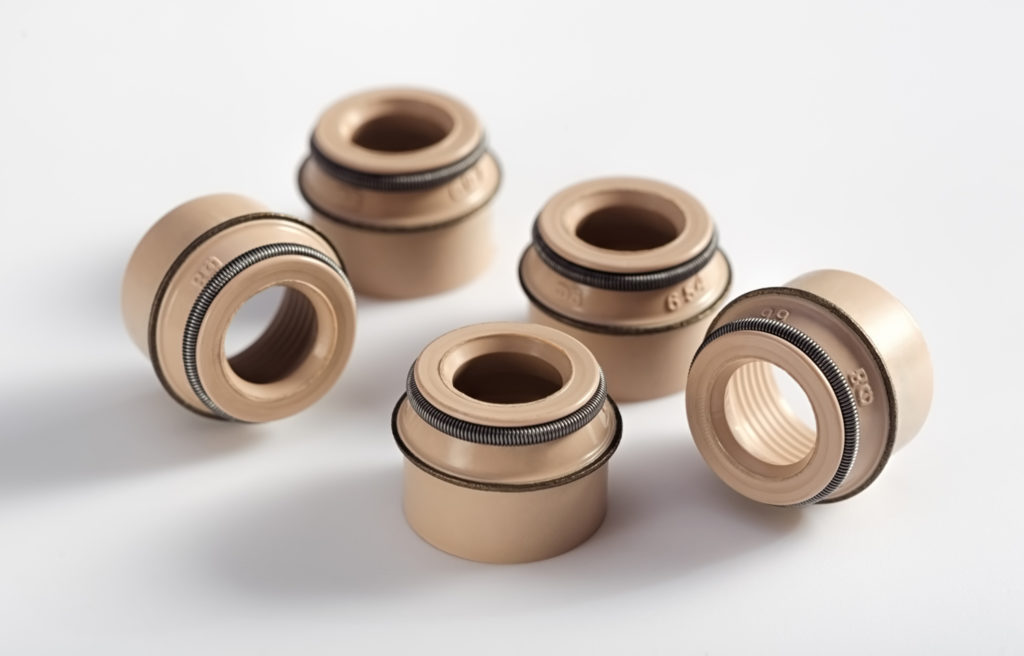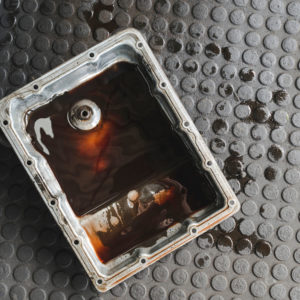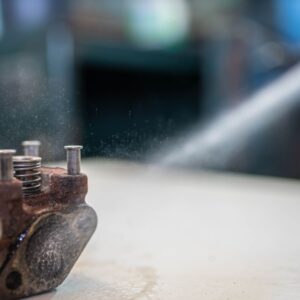There are many kinds of seals in a vehicle’s engine. A valve stem seal is a small component that keeps the valve stem sufficiently lubricated so that the engine can run smoothly. A leaking valve stem seal can cause poor engine performance and negatively affect emissions. Let’s take a deeper look into valve stem seals, what causes them to fail, and when to replace them.
What Is a Valve Stem Seal?
The valve stem is located beneath the valve springs in the engine’s cylinder head. The valve stem seal regulates the amount of oil in the valve stem that goes into the valve guide. Insufficient lubrication can cause the valve stem and guide to wear out faster due to friction. Excessive lubrication can result in carbon buildup that damages the valve seat, increases vehicle emissions, and causes oil consumption. Valve stem seals are available in two designs:

Deflector Seals
Deflector seals, also known as umbrella seals, deflect oil away from the valve stem to prevent excessive lubrication.
Positive Seals
Positive seals are attached to the valve guide boss, functioning like a squeegee that meters and wipes oil as it passes through the seals.

How Do Valve Stem Seals Work?
Internal combustion engines require the right amount of air and fuel to operate. A disruption in this mixture can cause potential damage to the system, as well as performance issues. The valve stem seal prevents oil from entering the engine’s combustion chamber, where it can cause severe damage to various components. It also prevents oil in the cylinder head from being contaminated by intake and exhaust gases.
The valve stem seal has an inside diameter that fits over the valve stem and an outside diameter that fits over the valve guide. They form a secure seal between the crankcase and combustion chamber, which prevents contamination and leaks.
How Are Valve Stem Seals Made?
Valve stem seals are made from a variety of materials, such as nylon, polytetrafluoroethylene (PTFE) rubber, steel, and synthetic rubber. These materials can be combined to create a single design. Valve stem seals usually have small springs that allow them to fit securely over the cylinder head.
What Causes Valve Stem Seals to Fail?
Several factors can cause valve stem seals to degrade over time. The following are some of the most common causes of valve stem seal failure:
- Valve stem seals can fail prematurely due to infrequent oil and filter changes
- Valve stem seals can fail due to improper installation
- Valve stem seals can fail with high mileage
- Valve stem seals in some engines can fail because of a design flaw
What Are the Symptoms of a Failing Valve Stem Seal?
A broken valve stem seal will exhibit one or more symptoms. Here are some of the most common symptoms of valve stem failure:
Tailpipe Emits Bluish Smoke
Bluish smoke can be an indication that the valve stem seal has become loose, broken, or severely damaged. Leftover oil on the cylinder head can get sucked down through a faulty seal into the engine’s combustion chamber and produce bluish smoke when expelled. You can usually see bluish smoke when revving the engine after idling for some time. This is because at idle, the valve stem seals leak oil into the cylinder where it accumulates. After revving up the engine, it burns off the excess oil until idling again. If you notice bluish smoke when you start up a cold engine or when you’re idling, you should inspect your system for signs of wear. Do note that bluish smoke can be caused by several other things, including issues with the PCV system and the piston rings.
Increased Oil Consumption
Oil can leak into the combustion chamber if the valve stem seal is leaking, causing oil levels to drop faster than normal. Other failed parts can also lead to increased oil consumption, so make sure to check your entire system for damage.
Excessive Smoke
Leftover oil can collect at the front cover of the cylinder head and burn longer than usual when you push on the accelerator after coasting. When driving downhill, you might notice a lot of smoke coming from the tailpipe.
When Should You Replace a Bad Valve Stem Seal?
An average valve stem seal can last 150,000 miles or more, if you take good care of your vehicle. That means changing your ride’s oil every 5,000 to 7,000 miles to reduce friction between the engine’s parts. Proper installation can also extend your seal’s life and protect your engine.
How Much Does It Cost to Replace Valve Stem Seals?
Aftermarket valve stem seals cost anywhere between $1 to $80 depending on the brand and inclusions. Labor costs will be vastly different depending on how many cylinders and cylinder heads your vehicle has, as well as your location.
You can replace valve stem seals with the cylinder heads on. However, you have to follow a specific set of instructions so you do not drop the valve down the cylinder. There are special tools to put air into the cylinder to keep the valve pushed up while you remove the valve spring.
–Anthony Harlin, ASE Certified Master Automobile Technician
Any information provided on this Website is for informational purposes only and is not intended to replace consultation with a professional mechanic. The accuracy and timeliness of the information may change from the time of publication.































